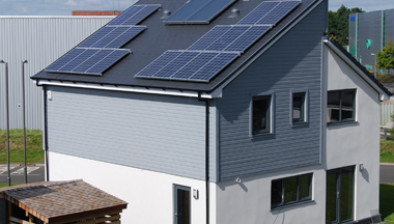Gilson Gray: Scotland’s private rental sector resets ahead of key legislative developments

Dundee (Photo: Zack Davidson)
Uncertainty over policy direction has led Scotland’s private rental sector (PRS) to undergo “a reset”, after a mixed year for rental growth across the country during 2024, according to Gilson Gray.
The full-service legal firm’s analysis of data from Citylets pointed to stalling rents in most of Scotland’s cities – although, overall, the country saw a 6.2% annual rise as the large increases of 2022 and 2023 spilled over into other areas.
Edinburgh’s PRS market was split in half, with one and two-bedroom properties seeing rents rise 1.9% and 2.2% respectively, while both three and four-beds fell 2.4%. Across all property types, rents were broadly flat for the year at -0.1%. Glasgow was similarly mixed, with an overall decline of -1.9%, but one and four-bedroom properties saw small increases (0.3% and 0.4%).
Dundee saw the biggest fall of the four largest cities, with an overall decline of -4.4%, influenced in part by a large -10.2% annual fall for three-bedroom properties. However, one-bedroom properties delivered a 6.2% 12-month rise – the strongest one-year growth rate of any property type in the cities tracked.
Meanwhile, Aberdeen bucked the trend with an overall 1.5% rise in rents, after several challenging years. Only four-bedroom properties registered a decline for the year, at -9.6%.
Gilson Gray said several factors were causing big changes in the market, particularly the rent cap and eviction legislation – encompassed in the Housing (Scotland) Bill – currently going through the Scottish Parliament. The Scottish Government recently announced it will scrap existing rent controls from the end of March 2024, at least until the Bill comes into effect in 2027.
Uncertainty over policy direction since the original introduction of restrictions has seen the number of PRS properties decline from 360,000 in 2017 to 330,000 by 2023. In addition, a report from the Institute of Fiscal Studies said the share of adults aged 24-34 years old in Scotland living with their parents – the so-called ‘hotel of mum and dad’ – increased from 13% in 2007 to 18% in 2024.
Marcus Di Rollo, lettings director at Gilson Gray, said: “The patchwork of growth and decline across Scotland is creating a very mixed picture. However, at a high level, that is due to a number of influences converging and leading to a recalibration of rents.
“Broadly speaking, prices are coming down across larger property types, which might be because the trends in demand for properties during the pandemic years are unwinding. Many people prioritised larger homes with garden space and were more willing and able to spend extra for those. But, with interest rates high and economic conditions difficult, that has reversed and many are choosing to downsize or relocate.
“At the same time, more younger people are deciding to stay, or move back into, the family home instead of paying high rents. There are many who see this as the only way of being able to save up the deposit required to make their first property purchase.”
He added: “On the supply side, uncertainty over policy is also taking its toll – namely the Housing (Scotland) Bill and short-term lettings legislation. The former could lead to more landlords exiting the market, while the latter may see more properties added – until there is a conclusion to both, it is difficult to know where things stand. That said, the lifting of rent controls should provide some support as the Housing (Scotland) Bill makes its way through parliament.
“With all of these factors at play, it is unsurprising to see a bit of a reset as rents try to find their new level. There is still a huge amount of latent demand and the available stock of PRS properties continues to be eroded. Given the high barrier of entry for new landlords, and the lack of new-build schemes coming through, it is difficult to see that changing. But little will change until the various pieces of the puzzle affecting Scotland’s PRS market fall into place.”









